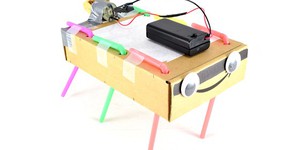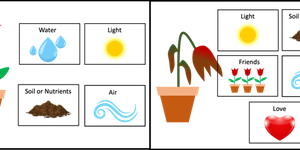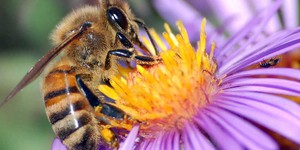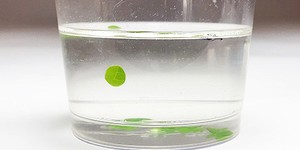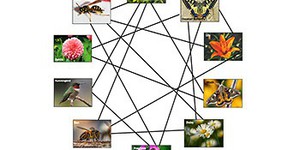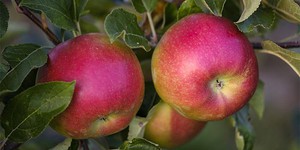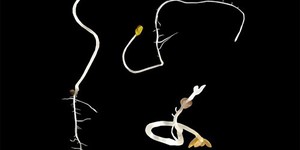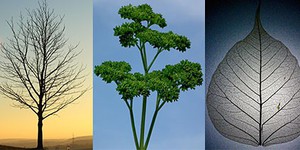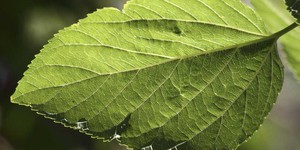Plant Biology Lesson Plans (13 results)
Plants provide us with so much — oxygen to breath, food to eat, materials to make clothing and paper, and beautiful flowers and leaves to admire! How can plants be so diverse and survive in so many kinds of climates? How do they know how to grow towards the sun? Why do some plants not have seeds? Explore the amazing and beautiful world of plants.
|
Select a resource
Sort by
|
Lesson Plan
Grade: 2nd
5 reviews
Your students might know that plants need water to survive. But how does a plant "drink" and get water from the soil all the way up to its' leaves? In this lesson plan, students will observe how plants (flowers and celery) suck up dye-stained water, which makes the petals and leaves change color! This allows students to visualize the process of how water moves through a plant.
Read more
NGSS Performance Expectations:
Featured
Lesson Plan
Grade: 6th-8th
7 reviews
Junkbots are easy-to-build robots that you can make using a simple circuit and some recyclable materials. In this lesson, your students will learn about engineering design as they compete to build the fastest robot. No previous robotics experience is required!
Read more
NGSS Performance Expectations:
Lesson Plan
Grade: Kindergarten
3 reviews
In this lesson, students will role-play a consultation between a plant scientist and a plant owner. The goal is for the plant scientist to identify what is wrong with the plant based on the information given by the plant owner. As they evaluate what the unhealthy plant has or doesn't have, students will realize that plants need four things (air, water, light, and soil) to live and grow.
Read more
NGSS Performance Expectations:
New
Lesson Plan
Grade: 6th-12th
Create a two-part system for filtering greywater. Teams will focus on communication and systems engineering as they build separate components to filter solid and liquid waste and then combine them into one device.
Learning Objectives
Students will:
Consider the potential effects of drought and how greywater could be part of the solution.
Design a system for filtering out solid waste or liquid waste.
Consider effective communication strategies with their team.
Collaborate on their design…
Read more
Lesson Plan
Grade: 3rd-7th
5 reviews
In this activity, students learn about plant reproduction and use real data to construct explanations about which flowers are the most attractive to different pollinators.
Read more
NGSS Performance Expectations:
Lesson Plan
Grade: 6th-8th
5 reviews
In this small group activity, students will build a plant seed (burr) from a Styrofoam® ball and other crafts materials. The seed needs to be designed in a way that it can be dispersed by attaching to a mockup animal (wool glove). Students will first test if their seed attaches to the wool glove and then carry their attached seed along an obstacle course inside the classroom. As students design their plant seed and mimic its dispersal via an animal, they will realize how some plants grow…
Read more
NGSS Performance Expectations:
Lesson Plan
Grade: 6th-8th
2 reviews
Plants carry out photosynthesis to produce sugars that they need as an energy source to live and grow. During photosynthesis, oxygen—a gas that many living beings need to survive—is released. This makes photosynthesis one of the most important biological processes on Earth. In Part 1 of this lesson plan, students will utilize the floating leaf disk assay to demonstrate the production of oxygen gas during photosynthesis. They will then continue to design and conduct their own…
Read more
NGSS Performance Expectations:
Lesson Plan
Grade: 2nd
3 reviews
Pollination and seed dispersal are both crucial processes in a plant's reproduction cycle. These processes are helped along by many factors, including different animals. For instance, some animals disperse the plant seeds, while others transfer pollen from one flower to another. In this lesson plan, students will investigate the interdependence between plants and animals for pollination and seed dispersal by creating interdependence webs out of yarn. Based on their created interdependence webs,…
Read more
NGSS Performance Expectations:
Lesson Plan
Grade: 3rd-5th
2 reviews
Students will explore heredity concepts by comparing observable traits of apples and onions, collecting data on the traits of different apple varieties, and learning about apple production. Additional activities include hands-on methods for testing apple ripeness.
Read more
NGSS Performance Expectations:
Lesson Plan
Grade: 6th-8th
6 reviews
How do plants know which way is up or down? How does this affect which direction their roots will grow? In this lesson plan, your students will investigate how changes in a plant's environment, like the direction of gravity, affect the shape of its growing roots over a period of several days.
Read more
NGSS Performance Expectations:
Lesson Plan
Grade: Kindergarten-2nd
Nature is full of objects with many different shapes. Some of these shapes display obvious regularities or distinct patterns, such as stripes, waves, symmetry, or spirals. Each of these natural patterns has evolved over a very long time and serves a specific function that usually helps a plant, animal, or other organism to survive. In this lesson plan, students explore the branching pattern of trees, plants, and leaves. They will make drawings and a leaf rubbing to compare different branching…
Read more
NGSS Performance Expectations:
Lesson Plan
Grade: 3rd-12th
1 review
Plants have many crucial roles on our planet, and among these is the gas exchange that happens within their leaves. As plants take in carbon dioxide from our atmosphere, they release oxygen and retain the carbon. In this lesson, students will investigate leaves up close to look for the structures responsible for gas exchange.
Read more
|
Explore Our Science Videos
Draw with a Pantograph - STEM Activity
Build A Vortex Cannon!
What Do Enzymes in Pineapple Juice Do to Milk?




